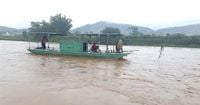Vietnam is undergoing a significant administrative transformation that promises to reshape several key sectors, including public transportation, tourism, and disaster management. The government’s recent decisions to reorganize provincial and local administrative units have sparked both optimism and practical challenges across the country.
One of the most immediate impacts is on the use and allocation of public vehicles. According to the Ministry of Finance, the government has issued Decree No. 153, amending previous regulations to allow communes to receive up to two public cars each, effective July 1, 2025. Previously, public vehicles were only allocated up to the district level. This change is part of a broader reorganization that reduces the number of provinces and cities to 34 and consolidates over 3,000 communes nationwide, establishing a two-tier local government model.
The Ministry estimates that around 6,000 public cars will be transferred from district agencies to commune-level authorities to meet this new allocation. However, some provinces are already voicing concerns about shortages. For example, Dak Lak province, which will activate 68 new commune and ward administrative units on July 1, currently has only about 70 public vehicles at the district level, many of which are aging and slated for liquidation. As a stopgap, officials plan to assign one vehicle per commune or ward, though this is widely seen as insufficient for the increased administrative workload.
Similarly, Phu Yen province, with 105 public cars distributed between provincial and district levels, faces a shortfall after reorganization. While each of its 34 new communes will receive one vehicle, more populous and central wards like Tuy Hoa may get two. Yet, some local officials argue that a single vehicle will not meet the demands of both Party and government offices over the long term.
Adding complexity, merged provinces face logistical challenges for their officials. The Dak Lak-Phu Yen merger will see about 616 civil servants from Phu Yen working in Dak Lak, many of whom will require contracted vehicle services or will use personal transport, with roughly 30% expected to self-fund their commuting. Similarly, the merger of Binh Thuan and Khanh Hoa will involve nearly 1,500 personnel commuting to Nha Trang, necessitating either public vehicle transport or subsidized private transportation.
Despite these challenges, the automotive industry—both new and used car dealers—anticipate increased demand driven by the administrative reshuffle. The need for official vehicles, passenger transport services, and private cars is expected to rise, supporting market growth. Yet, some experts caution that this demand spike may not be dramatic due to a currently abundant vehicle supply.
Data from Vietnam’s General Statistics Office reveals that domestic car production reached 183,400 vehicles by the end of May 2025, marking a 70.3% increase over the previous year. Added to this are 83,495 imported cars and over 100,000 vehicles carried over from 2024 inventories, totaling a market supply exceeding 370,000 vehicles. Meanwhile, total sales for the same period stand at approximately 230,000 vehicles, leaving a surplus of about 140,000 cars. This oversupply, coupled with falling prices, creates a buyer-friendly market environment.
Beyond transportation, the administrative restructuring offers a fresh canvas for Vietnam’s tourism industry. The National Assembly’s June 12, 2025 resolution consolidates provincial units into 34 administrative entities, including six centrally-run cities and 28 provinces. Experts and industry leaders see this as a golden opportunity to revamp and synchronize tourism development strategies.
Nguyen Manh Than, Chairman of the Hanoi Tourism Association, highlights that the new administrative boundaries will facilitate strategic restructuring, enabling localities to coordinate better on resource management, infrastructure connectivity, and integrated tour development. This will help create continuous and sustainable tourism value chains, moving away from fragmented, isolated efforts.
Dr. Trinh Le Anh from Hanoi National University’s Faculty of Tourism echoes this optimism, noting that merged provinces can now develop inter-regional tours where each area serves as a vital link. For instance, tourists visiting Lam Dong province could enjoy both the Central Highlands’ mountains and coastal attractions, offering novel, diverse experiences.
Nguyen Tien Dat, Vice Chairman of the Hanoi Tourism Association, elaborates on how mergers can harmonize product innovation. The recent unification of Hai Duong and Hai Phong provinces allows the “Con Son - Kiep Bac - Cat Ba” tour to operate seamlessly without requiring separate permits from two local governments. Similarly, the planned Lam Dong - Binh Thuan - Dak Nong area can offer extended 5-6 day itineraries combining misty highlands, sunny beaches, and dense forests in a cohesive manner.
However, such transformations require careful branding and promotion. Pham Ha, Chairman of Lux Group, advises shifting marketing focus from administrative names to the distinctive qualities of destinations, such as pristine beaches and excellent services. This approach better resonates with tourists who seek authentic experiences rather than bureaucratic labels.
Local authorities and businesses must collaborate closely on infrastructure planning, transportation improvements, and promotion of new inter-regional tourism products. Assoc. Prof. Dr. Pham Truong Hoang from the National Economics University stresses that sustainable tourism brands thrive when embraced by local communities, who act as ambassadors to visitors. He urges the tourism sector to involve residents in planning and policy-making to ensure genuine representation and success.
From a business perspective, Nguyen Cong Hoan, Director of Flamingo Redtour, points out that mergers necessitate redesigning tourism maps and communication strategies. During the transition, using both old and new place names can help tourists adapt gradually without losing brand recognition. Moreover, digital platforms like social media, search engines, and digital maps should be leveraged to maintain easy access to updated destination information despite administrative changes.
Deputy General Director of Sungroup, Dong Thi Ngoc Anh, recommends that the Vietnam National Administration of Tourism strengthen partnerships with the Ministry of Foreign Affairs to organize famtrips for international tour operators and journalists. Such initiatives can amplify Vietnam’s image globally and utilize foreign media channels to share compelling stories and visuals of Vietnamese tourism.
Deputy Director General of the Vietnam National Administration of Tourism, Ha Van Sieu, emphasizes the importance of targeted market research to ensure effective promotion post-merger. Since many international visitors arrange trips independently, digital marketing and innovative communication strategies are crucial to attract them. He advises focusing on a few key international promotion events annually to maximize impact and encourages integrating online and offline marketing for optimal brand positioning.
Meanwhile, the ongoing rainy season poses heightened risks of natural disasters such as storms, floods, landslides, and flash floods, especially amid administrative restructuring. Gia Lai province’s authorities have issued firm directives to ensure disaster preparedness and response remain uninterrupted despite the organizational changes.
The Provincial People’s Committee requires all department heads and local officials to vigilantly monitor weather developments and implement timely disaster prevention and search and rescue operations. They are explicitly warned against complacency or any lapse in leadership during the administrative transition.
District and commune-level authorities must maintain strict adherence to approved disaster response plans based on the “four on-site” principle, regularly update the public on weather warnings, and prepare evacuation strategies for high-risk areas. Importantly, the reorganization must not disrupt these critical efforts.
The province is also coordinating closely with neighboring Binh Dinh province to share information and unify command structures for disaster response, particularly regarding dam safety and flood control. Military, border guard, and police forces are revising their operational plans and readying equipment and personnel to ensure swift and effective interventions.
Gia Lai’s local media is tasked with intensifying communication about weather threats to keep both officials and citizens informed and prepared. Relevant agencies are reviewing responsibilities to guarantee smooth management of disaster prevention and control during and after the administrative overhaul.
In sum, Vietnam’s administrative reorganization is a complex but promising endeavor. It aims to enhance governance efficiency, stimulate economic sectors such as automotive and tourism, and strengthen disaster resilience. While challenges remain—like vehicle shortages at the commune level and the need for coordinated tourism branding—the country is poised to leverage these changes for sustainable development and improved public services.



